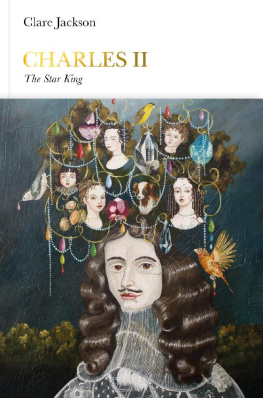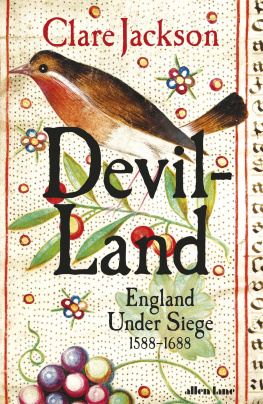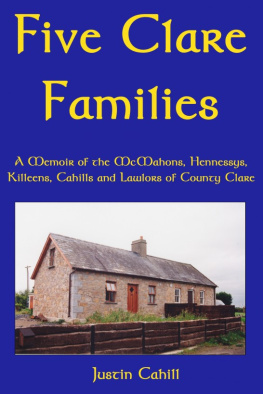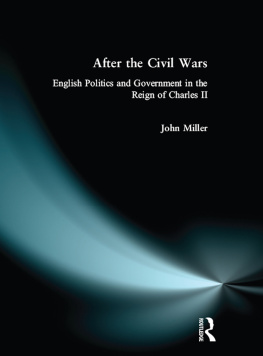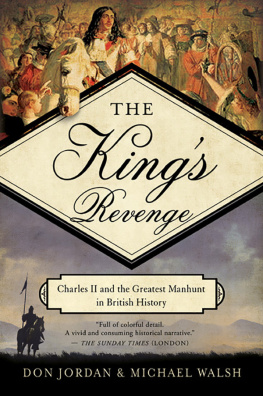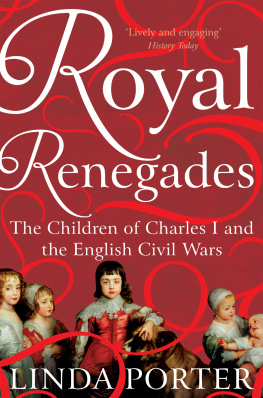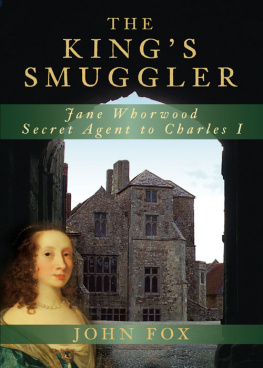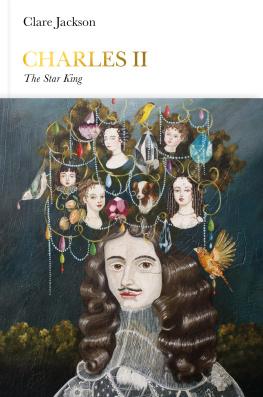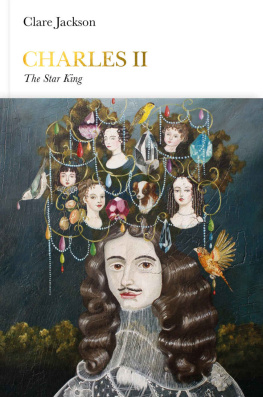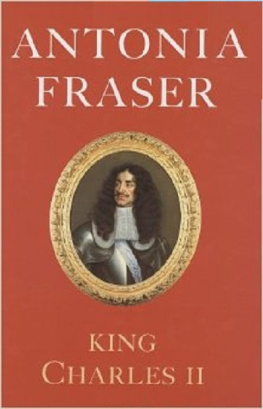Acknowledgements
Writing this short biography has been a hugely enjoyable experience and I am grateful to Simon Winder for providing me with this opportunity and to Peter Robinson for its facilitation. At Penguin, I am grateful for the editorial expertise and assistance of Maria Bedford, Anna Herv, Cecilia Mackay and Kate Parker. I am likewise indebted to Will Ferguson, Mark Goldie, Susanna Mitchell and William OReilly, who read this book in draft, while Amy Blakeway and Ian Campbell provided assistance with translations. Charles II: The Star King was commissioned shortly after completing The Stuarts series for BBC2 and I am warmly appreciative of the intellectual and creative stimulation provided by, among others, Richard Downes, Neil McDonald and Colin Murray at BBC Scotland. The fact that this biography was written during university term time, while serving as Trinity Halls Senior Tutor, was only possible with practical assistance from my PA, Julie Powley, and a dedicated tutorial office team within college. In May 1664, an afternoon playing the good husband was deemed sufficiently unusual for Charles II to record its occurrence in a letter to his sister Henriette. For my part, since time spent with Charles inevitably meant repeated absences from home, I am deeply grateful to Mark and Julius for their cheerful tolerance and unstinting encouragement. Additional thanks are due to Julius for helpfully pointing out the close physical resemblance between Charles and J. M. Barries Captain Hook.
Penguin Monarchs
THE HOUSES OF WESSEX AND DENMARK
Aethelred the Unready
Richard Abels
Edward the Confessor
James Campbell
THE HOUSES OF NORMANDY, BLOIS AND ANJOU
William II
John Gillingham
THE HOUSE OF PLANTAGENET
Edward II
Christopher Given-Wilson
Edward III
Jonathan Sumption
THE HOUSES OF LANCASTER AND YORK
Richard III
Rosemary Horrox
THE HOUSE OF TUDOR
THE HOUSE OF STUART
[ Cromwell
David Horspool ]
William III & Mary II
Jonathan Keates
THE HOUSE OF HANOVER
THE HOUSES OF SAXE-COBURG & GOTHA AND WINDSOR
Edward VII
Richard Davenport-Hines
1
The Star King
If you were to stop someone on the street and show them images of British monarchs through the ages, Charles II would be among the most recognizable. As the cover of this volume vividly confirms, few kings so readily embody the distinct texture of their period: for many, the Merry Monarch is the Restoration. Lusciously flowing dark ringlets and sumptuously rich Cavalier attire evoke nostalgic impressions of baroque theatricality, swashbuckling extravagance and sexual innuendo. In popular memory, costume dramas and romantic fiction, Charles is affectionately remembered as one of this countrys most charismatic and affable monarchs. He was that rare phenomenon: a king with real star quality.
Precisely because of this correlation, however, few monarchs have acquired so polarized a posthumous reputation. Scholarly opinion has preserved a more equivocal distance, refusing to be seduced by this kings popular appeal. To aspiring biographers, Charles presents a challenge, having repeatedly evaded attempts to capture his personality. Since contemporary accounts of his character yield only a prevailing feeling of unreachability, frustrated historians have reluctantly concluded that the man inside the king
This biography emphasizes instead the vital importance that Charles attached to popular perceptions and public representations of his kingship. No other monarch in British history has succeeded as king after a republican experiment. No other monarch was thus so acutely aware of the extent to which, following a largely peaceful restoration to his English, Scottish and Irish thrones in 1660, his survival as monarch depended on his subjects goodwill after two traumatic decades that had seen prolonged and bloody civil wars, culminating in his fathers execution, and a period of republican and military rule dominated by , followed by four chapters focusing on visual, ceremonial, literary and posthumous depictions of Charles II. This thematic approach reflects not only this particular monarchs preoccupations, but also our own modern obsessions with external appearance and presentational spin.
An appreciation of this kings performance is thus key to probing his personality. Indeed, as an avid supporter of Restoration theatre, Charles was adept at donning different roles, of which being monarch was just one. As an eight-year-old, he had been advised by his governor, William Cavendish, Earl of Newcastle, that a king must know at what time to play the king, and when to qualify it and, during the civil wars, Charles preserved his life precisely by disguising his identity and successfully impersonating his humblest subjects while on the run from Parliamentarian enemies. Moreover, at the Restoration, Charless image became central to reasserting royal authority and to reconstituting monarchical culture more widely. Accordingly, he remains one of the most frequently depicted monarchs in British history before the advent of modern photography and film, with many more portraits, prints and sculptures surviving of Charles II than of his father, despite the cult of martyrdom that attached to Charles I after his execution in 1649. Posteritys appreciation of Charles II is also necessarily refracted through his public persona and the observations of others since he left no published writings or diaries and few personal letters, unlike his father or his grandfather James I and VI.

